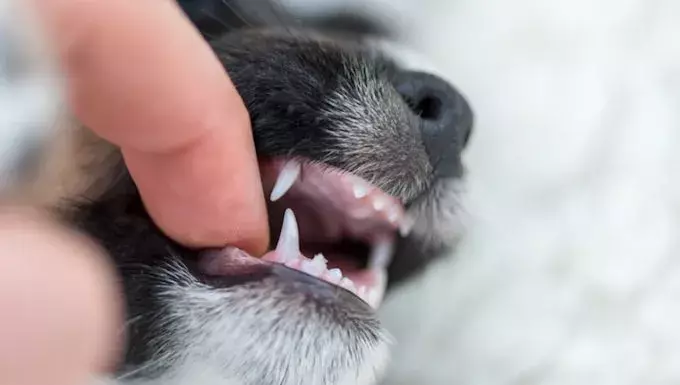Epulis is a medical term that refers to benign tumors that form in the gum tissue of dogs. These growths can develop near a tooth and are categorized into three main types: ossifying, fibromatous, and acanthomatous epulides. While benign, these growths can significantly impact a dog’s oral health and overall well-being.
The presence of epulis can manifest through various symptoms affecting a dog’s ability to eat, chew, and maintain overall oral hygiene. Pet owners should be vigilant for signs, including:
– Bleeding from the gums: This can be an alarming sign that requires immediate veterinary attention.
– Excessive drooling: Increased saliva production may signal discomfort or pain in the mouth.
– Changes in appetite: A loss of interest in food can be indicative of dental pain.
– Difficulty chewing: If a dog is struggling to eat, it may mean that a growth is interfering with their chewing mechanics.
– Persistent bad breath: Foul-smelling breath could symbolize a dental issue or infection.
– Swelling in the jaw: A noticeable bump or swelling could be a sign of a growth forming.
– Weight loss: Reduced intake of food can lead to significant weight loss over time.
Recognizing these symptoms early can be crucial for effective treatment.
Understanding the Causes and Risk Factors
Despite ongoing research, the exact cause of epulis remains elusive. However, certain dog breeds are believed to be more susceptible. Breeds such as Boxers, Old English Sheepdogs, English Bulldogs, Shetland Sheepdogs, and American Bulldogs are often seen with the condition. Most at-risk are typically brachycephalic breeds—those with flat faces, as their dental structure can predispose them to oral growths.
It’s also important to distinguish epulis from similar conditions. For instance, gingival hyperplasia involves the overall enlargement of the gums, rather than localized growths. This distinction underscores the necessity of a professional evaluation.
Diagnosis and Treatment Options
Once symptoms are observed, consulting a veterinarian is critical. The diagnosis typically begins with a comprehensive physical exam, focusing on the oral cavity. Your vet may use X-rays to determine the extent of the growth and its proximity to the underlying teeth and bone. Blood tests might also be ordered to check for any signs of systemic issues.
Treatment generally involves surgical removal of the epulis, which is essential to alleviate symptoms and prevent recurrence. Post-operative care often includes a soft food diet to ease chewing discomfort and the provision of pain medications. Following the veterinarian’s specific dosage instructions is imperative for the dog’s recovery.
Although the reasons behind epulis development are not fully understood, maintaining proper dental hygiene can help mitigate risks associated with various dental issues. Regular brushing and dental check-ups can play a role in keeping your dog’s mouth healthy.
While epulis can pose challenges for both dogs and their owners, understanding the symptoms, being aware of the breeds most at risk, and obtaining prompt veterinary care can lead to a successful outcome. If your dog exhibits any of the listed symptoms, do not hesitate to reach out to your veterinarian for concern and care.

